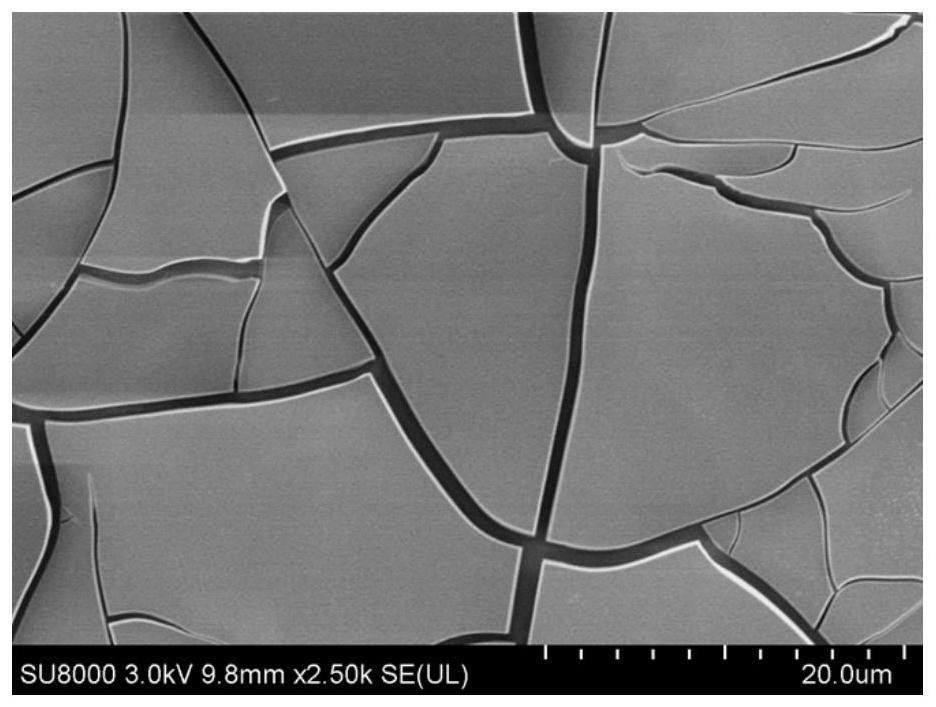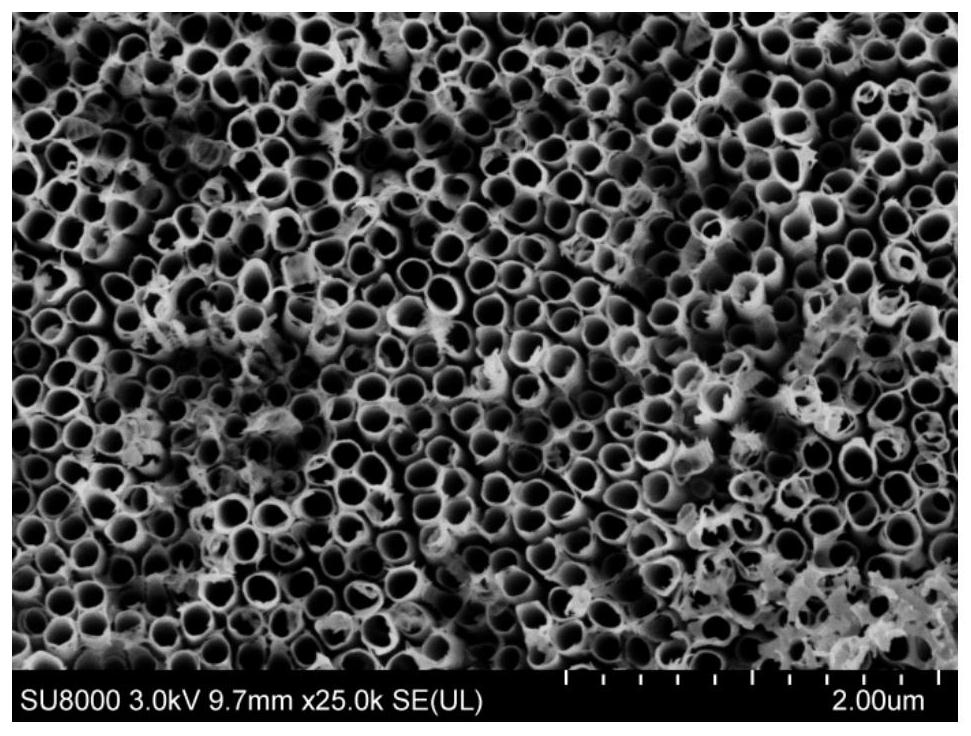Composite material for implant and preparation method of composite material
A composite material and implant technology, applied in the field of composite materials for implants and their preparation, can solve problems such as poor antibacterial properties, and achieve the effects of increasing osteoinductivity, increasing biocompatibility, and reducing inflammation
- Summary
- Abstract
- Description
- Claims
- Application Information
AI Technical Summary
Problems solved by technology
Method used
Image
Examples
Embodiment 1
[0115] A composite material for implants comprising a titanium metal base layer, a titanium dioxide nanotube layer, and a coating comprising hydroxyapatite and rare earth-doped metal-organic framework particles is prepared by the following steps.
[0116] Step (1): Titanium sheet pretreatment
[0117] Firstly, a titanium plate with a thickness of 0.1mm (purchased from Yitai Metal Co., Ltd.) was cut into titanium sheets with a size of 10x15mm. Immerse the titanium sheet in 10ml of acetone, 10ml of ethanol, and 10ml of deionized water in sequence, and ultrasonically clean it for 5 minutes, then take it out and dry it.
[0118] It is then immersed in HF, HNO at a volume ratio of 1:4:5 3 、H 2 O mixed acid solution (the total volume of the mixed acid solution is 10mL) for 15s to remove the metal oxide film on the surface.
[0119] Then ultrasonically wash with deionized water and dry naturally to obtain the pretreated titanium sheet.
[0120] Step (2): Preparation of titanium d...
Embodiment 2
[0134] Step (1): Titanium sheet pretreatment
[0135] Same as step (1) of Example 1.
[0136] Step (2): Anodizing
[0137] Same as step (2) of embodiment 1.
[0138] Step (3): Preparation of Rare Earth Doped Metal Organic Framework Particles
[0139] Dissolve zinc acetate dihydrate (0.35 g) in 10 mL of deionized water to form solution A. Dissolve 1.08 g of 2-methylimidazole in 10 mL of deionized water to form solution B.
[0140] Subsequently, solution B was slowly injected into solution A, and magnetically stirred for 1 minute to fully react to obtain a mixed solution. The mixed solution was then left to stand at room temperature for 24 hours. Next, the mixed solution was centrifuged, and the supernatant was decanted to obtain a solid product.
[0141] The solid product was washed with deionized water and centrifuged again, and this process was repeated three times,
[0142]Finally, the obtained product was dried in a vacuum oven at 60° C. for 12 hours to obtain metal ...
experiment example 1 2
[0152] Experimental example 1 Morphology inspection of titanium dioxide nanotube layer
[0153] The titanium sheet of comparative example 1 and the titanium sheet of the surface modification of the step (2) gained of embodiment 1 carry out surface morphology observation with scanning electron microscope respectively, obtain respectively figure 1 and 2 .
[0154] From figure 1 It can be seen from the figure that the spontaneously formed oxide film on the surface of the titanium sheet of Comparative Example 1 is irregular and has many cracks. This can easily lead to the peeling off of the oxide film after implantation in the human body, or the reduction of the stress strength of the titanium sheet, and it is easy to cause stress deformation, and there is a risk of secondary injury.
[0155] From figure 2 It can be seen from the figure that the surface of the surface-modified titanium sheet in Example 1 is a titanium dioxide nanotube layer, wherein the titanium dioxide nanot...
PUM
 Login to View More
Login to View More Abstract
Description
Claims
Application Information
 Login to View More
Login to View More - R&D
- Intellectual Property
- Life Sciences
- Materials
- Tech Scout
- Unparalleled Data Quality
- Higher Quality Content
- 60% Fewer Hallucinations
Browse by: Latest US Patents, China's latest patents, Technical Efficacy Thesaurus, Application Domain, Technology Topic, Popular Technical Reports.
© 2025 PatSnap. All rights reserved.Legal|Privacy policy|Modern Slavery Act Transparency Statement|Sitemap|About US| Contact US: help@patsnap.com



